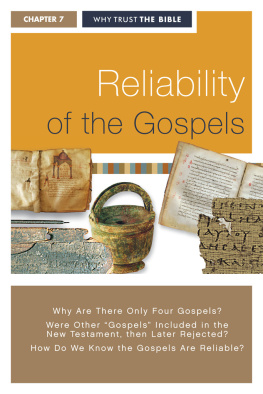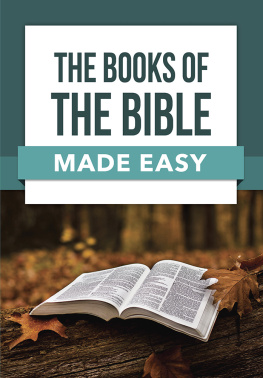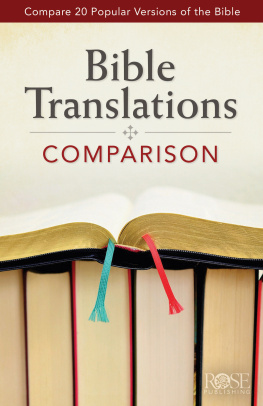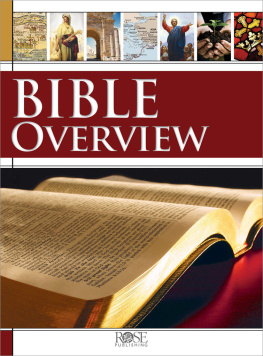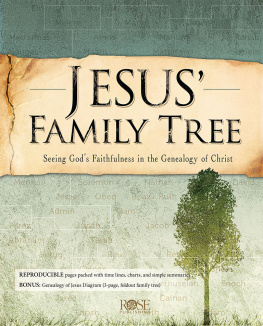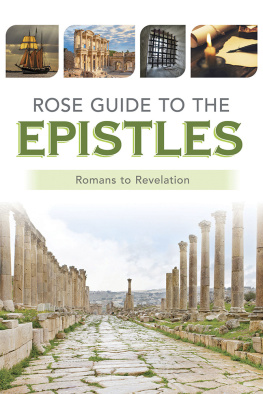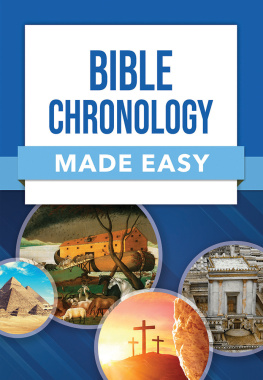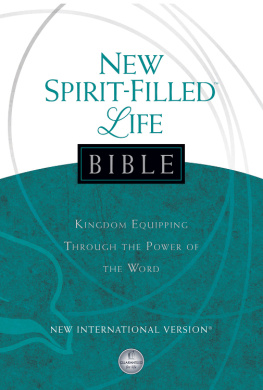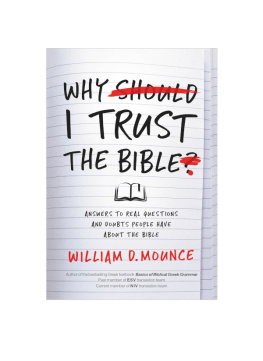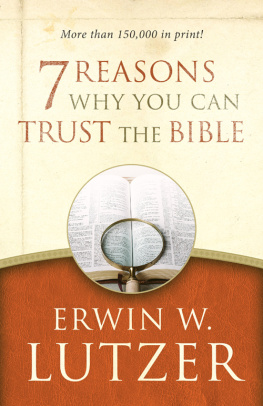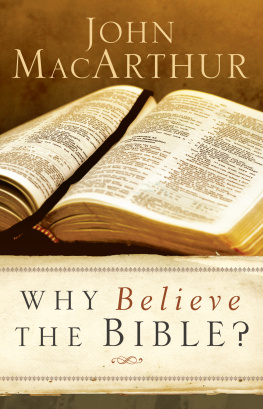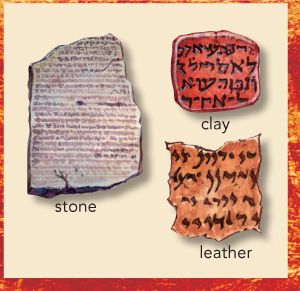The printed version of this eBook is the Why Trust the Bible book, ISBN-13: 9781596362017
All Scripture quotations, unless otherwise noted, are taken from the Holy Bible, New International Version . NIV. Copyright 1973, 1978, 1984 by International Bible Society. Used by permission of Zondervan. All rights reserved.
It is illegal to photocopy, transmit electronically, post on the internet, or reproduce this pamphlet in whole or in part in any form.
2009 Bristol Works, Inc.
Rose Publishing, LLC
PO Box 3473
Peabody, Massachusetts 01961-3473 U.S.A.
Email: info@hendricksonrose.com
www.hendricksonrose.com
All rights reserved.
Build: 2021-12-03 12:01:49 EPUB 2.0
ROSE BIBLE BASICS
Why Trust the Bible
With this handy eBook, you will
- Be able to defend the Bibles reliability.
- Know how we got the Bible.
- Discover the incredible significance of the Dead Sea Scrolls.
- Understand why certain Gospels are in the Bible and others are not.
- See why we can be confident in the accuracy of Bible translation over the centuries.
- Uncover over 100 archaeologically backed reasons to trust the Old and New Testaments.
How We Got the Bible
Ten Key Points
The Bible is inspired by God (2 Timothy 3:16-17; 2 Peter 1:20-21).
The Bible is made up of 66 different books that were written over 1600 years (from approximately 1500 BC to AD 100) by more than 40 kings, prophets, leaders, and followers of Jesus. The Old Testament has 39 books (written approximately 1500-400 BC ). The New Testament has 27 books (written approximately AD 45-100). The Hebrew Bible has the same text as the English Bible's Old Testament, but divides and arranges it differently.
The Old Testament was written mainly in Hebrew, with some Aramaic. The New Testament was written in Greek.
The books of the Bible were collected and arranged and recognized as inspired sacred authority by councils of rabbis and councils of church leaders based on careful guidelines.
Before the printing press was invented, the Bible was copied by hand. The Bible was copied very accurately, in many cases by special scribes who developed intricate methods of counting words and letters to insure that no errors had been made.
The Bible was the first book ever printed on the printing press with moveable type (Gutenberg Press, 1455, Latin Bible).
There is much evidence that the Bible we have today is remarkably true to the original writings. Of the thousands of copies made by hand before 1500, more than 5,900 Greek manuscripts from the New Testament alone still exist today. The text of the Bible is better preserved than the writings of Plato or Aristotle.
The discovery of the Dead Sea Scrolls confirmed the astonishing reliability of some of the copies of the Old Testament made over the years. Although some spelling variations exist, no variation affects basic Bible doctrines.
As the Bible was carried to other countries, it was translated into the common language of the people by scholars who wanted others to know God's Word. Today there are still 2,000 groups with no Bible in their own language.
By AD 200, the Bible was translated into seven languages; by 500, 13 languages; by 900, 17 languages; by 1400, 28 languages; by 1800, 57 languages; by 1900, 537 languages; by 1980, 1,100 languages; by 2006, 2,426 languages have some portions of the Scripture.
Source: The World Christian Encyclopedia ; Wycliffe, International.
Old Testament Written
(approx. 1500-400 BC )
New Testament Written
(approx. AD 45-100)
The oldest New Testament fragment (from John 18) that we have today was copied in Greek on a papyrus codex around AD 110-130.
Bible Copied on Papyrus
Scrolls of leather, and later of papyrus, were used to make copies of the Scriptures. A papyrus codex is a bound volume made from sheets folded and sewn together, sometimes with a cover. They were used more than scrolls after AD 1-100.
Bible Copied on Fine Animal Skins
Fine quality animal skins from calves or antelope (vellum) and sheep or goats (parchment) were used for over 1000 years to make copies of the Bible approximately AD 300-1400.
Two of the oldest vellum copies ( AD 325-350) that exist today are the Vatican Codex and the Sinaitic Codex.
Bible Printed by Printing Press after 1455
Wycliffe Bibles were inscribed by hand on vellum in the 1300s-1400s. Some copies took ten months to two years to produce and cost a year's wage.
The Bible was the first book to be printed with Gutenberg's printing press in 1455.
The Bible, God's Word to the World
The Bible is now printed on paper in many versions and languages. It is also on recordings and the Internet.
2000 BC
Old Testament events are written down in Hebrew (portions in Aramaic) over centuries. In Exodus, the Lord tells Moses to write in a book. Other Old Testament writers, inspired by God, include leaders, kings and prophets. Together, these writings on leather scrolls and other materials are called the Hebrew Scriptures or Old Testament.
500 BC
Ezra, a priest and scribe, collects and arranges some of the books of the Hebrew Biblethe Old Testamentabout 450 BC , according to Jewish tradition.
The Septuagint is the Greek translation of the Hebrew Bible (the Old Testament). It is translated in 250-100 BC by Jewish scholars in Alexandria, Egypt. (The word Septuagint means seventy, referring to the tradition that 70 or 72 men translated it. It is often abbreviated LXX, the Roman numeral for seventy.)
200 BC
The books are arranged by subject: historical, poetic, and prophetic. It includes the Apocrypha (meaning hidden), referring to seven books that were included in the Hebrew Bible until AD 90 when they were removed by Jewish elders.

A Scribe
Papyrus, a plant, is cut into strips and pressed into sheets of writing material and can be made into a scroll or a codex. The New Testament books were probably first written on papyrus scrolls. Later Christians begin to copy them on sheets of papyrus which are bound and placed between two pieces of wood for covers. This form of early book is known as a codex.

